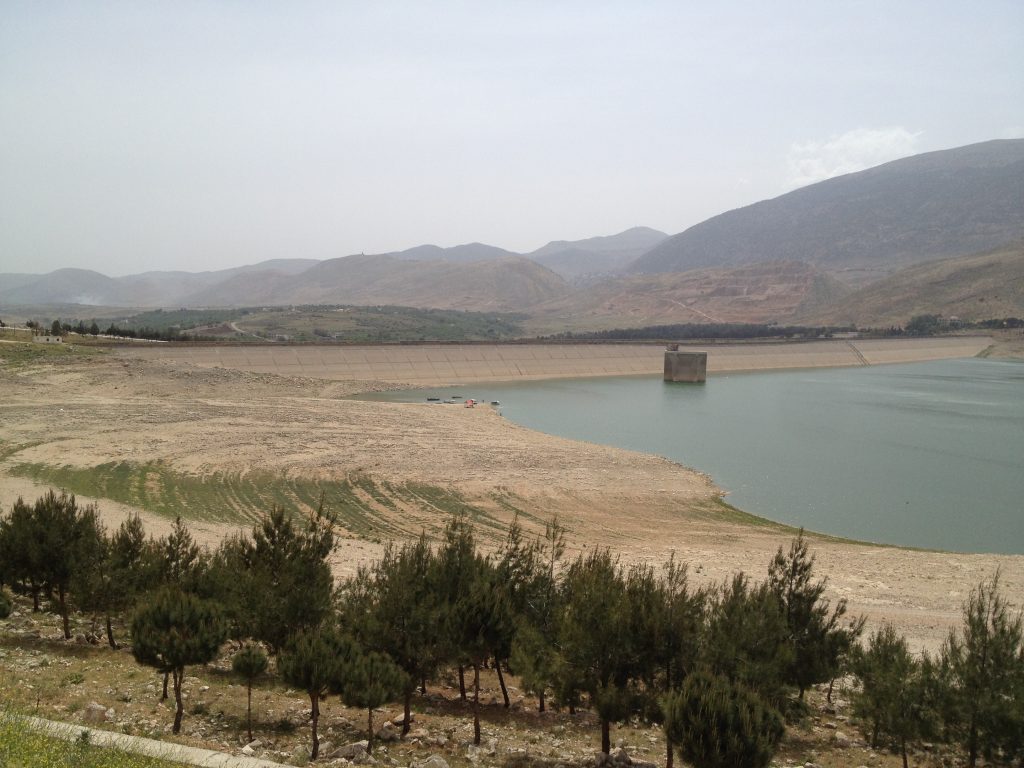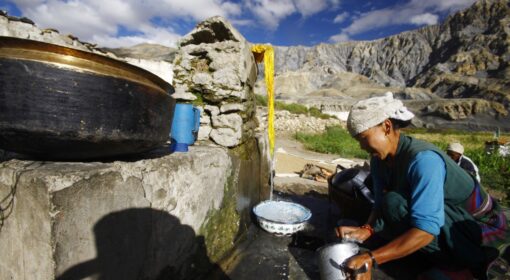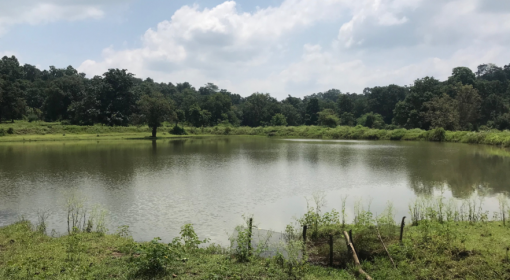by Frank van Steenbergen and Nadim Farajalla
March 09, 2021

The allocation of water is at the heart of water governance – deciding who gets what amount of water, when, and under what circumstances. Which sector – agriculture, industries, cities, mining, etc. – has what kind of access to water, which system receives what volume of water – fundamental questions, all of them.
And yet even though it is at heart of water governance and one may say close to the core of society and economy at large, the allocation of water is a blind spot. The fundamental questions are typically not discussed nor addressed. There are very few papers on it, there is no center of excellence, no community of practice. Water allocation is out of sight, and with that de facto often a never changing ‘given’.
Now that many countries descend below the water-stress line, that investment opportunities in capturing ‘new’ water resources are quickly closing, and that water scarcity is becoming more and more of a security issue, it is time to start asking the questions: on how water is allocated, how this alloication ncan be improved and how we can ensure a sustainable allocation of water for agriculture and other sectors.
Water allocation is extra important in relation to irrigation. First of all, water use in agriculture, in irrigation in particular, exceeds all other water uses almost everywhere. So if water productivity can be improved and water can be saved in agriculture, it can be freed up and reallocated for other purposes. Secondly, in irrigation water allocation assumes an extra dimension. In irrigation it is not only about who gets what but also how water is delivered and made available: in what quantity, for how long, at what interval and in what order. Ideally this should be flexible, ideally this should be tailored to the requirements of the crop but also to all other needs of water uses in the system, such as for drinking water. If water allocation is optimized it contributes greatly to water use efficiency, water productivity and multifunctionality. Yet in reality, instead of being optimized, water allocation is often not in sync with requirements of time and quantity, leading to a wastage of water delivery – constituting an opportunity lost. Typically all attention in improving water use efficiency goes to field optimization measures or individual incentive systems. Whilst this is important, it is missing the large opportunity of regulating water management at system level, i.e. from the top.
There are by now however several examples on how optimizing water allocation in agriculture can lead to large improvements in water use efficiency. For instance, curtailing surface irrigation water deliveries may encourage the conjunctive use of surface water and groundwater in canal command areas. Such conjunctive practice will avoid water logging and improve water productivity, as water application will be more precise and also free up surface water for other purposes. Another example is where the duration of the irrigation cycle is adjusted so as to be in tune with the demands of the crops grown, with vegetables for instance requiring shorter intervals than grains. Or an overall adjustment of the volumes of water supplied so that there is no overirrigation. This may also be done in the form of better regulation of water deliveries throughout the system so there is less water hoarding in upstream sections of an irrigation system. Yet another example is the systematic scheduling of the irrigation supplies over an area, so that irrigation deliveries– rather than being done haphazardly with irrigation canals having to be filled every time when a new irrigation turn starts– follow orderly patterns where irrigation is provided from one field to the field immediately adjacent.
Hence, in irrigation, water allocation at system level is essential to contributing to water use efficiency. In fact, it is also important to make best use of improved field efficiency or better drainage, by asking and answering questions such as: ‘where is the water that is saved by better field efficiency going to be allocated to’ or ‘what is being done with the water collected in drainage systems’.
So where to start? The OECD (2015) publication on ‘Water Resources Allocation: Sharing Risks and Opportunities’ includes a useful ‘health check’ that helps to better understand the scope for improved water allocation. This comprises of a number of ‘intake’ questions that help to better understand the current arrangements (or absence thereof) in water allocation. This check merits wider follow up.
This health check is a useful way of starting to put water allocation on the agenda and start the debate; also looking at the angles of implementation capacity, accountability, legal tenure, finance and policy. We argue there is much merit in a systematic overhaul and refitting of main water allocation systems, starting in irrigated agriculture. As irrigated agriculture remains the prime water consumer and water allocation has in many cases been flying blindly, rationalizing water allocation in irrigation systems in many cases will be a sure winner.

All this is in line with the Cairo Declaration off 4 April 2019 that resulted from the First Joint Meeting of Arab Ministers of Agriculture and Water organized by the League of Arab States. The Middle East and North Africa is the region that arguably is most affected by water scarcity globally, and hence this first meeting between Ministers of Agriculture and Ministers of Water was a watershed of sorts. Their common statement advocated the need to address scarcity, the importance to collaborate between water and agriculture, the urge for new investments and new type of investments. As the limits to water capture have been reached, investment should be in water management and using the water better rather than in new water infrastructure. Optimizing water allocations should be a central element in this.
Prepared in support of the development of Voluntary Guidelines for Sustainable Water Allocation in Agriculture by FAO, ESCWA and AOAD for the League of Arab States.



